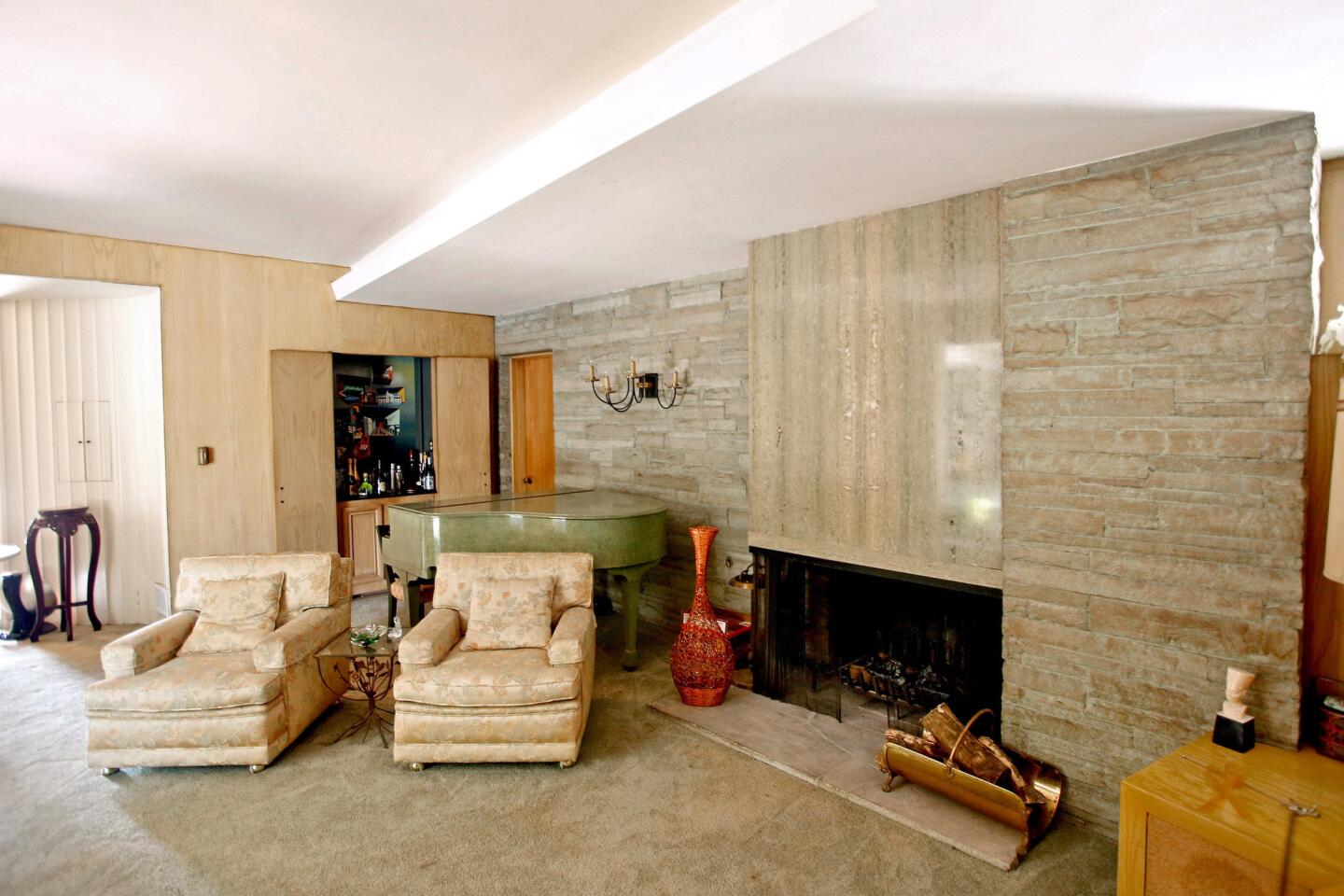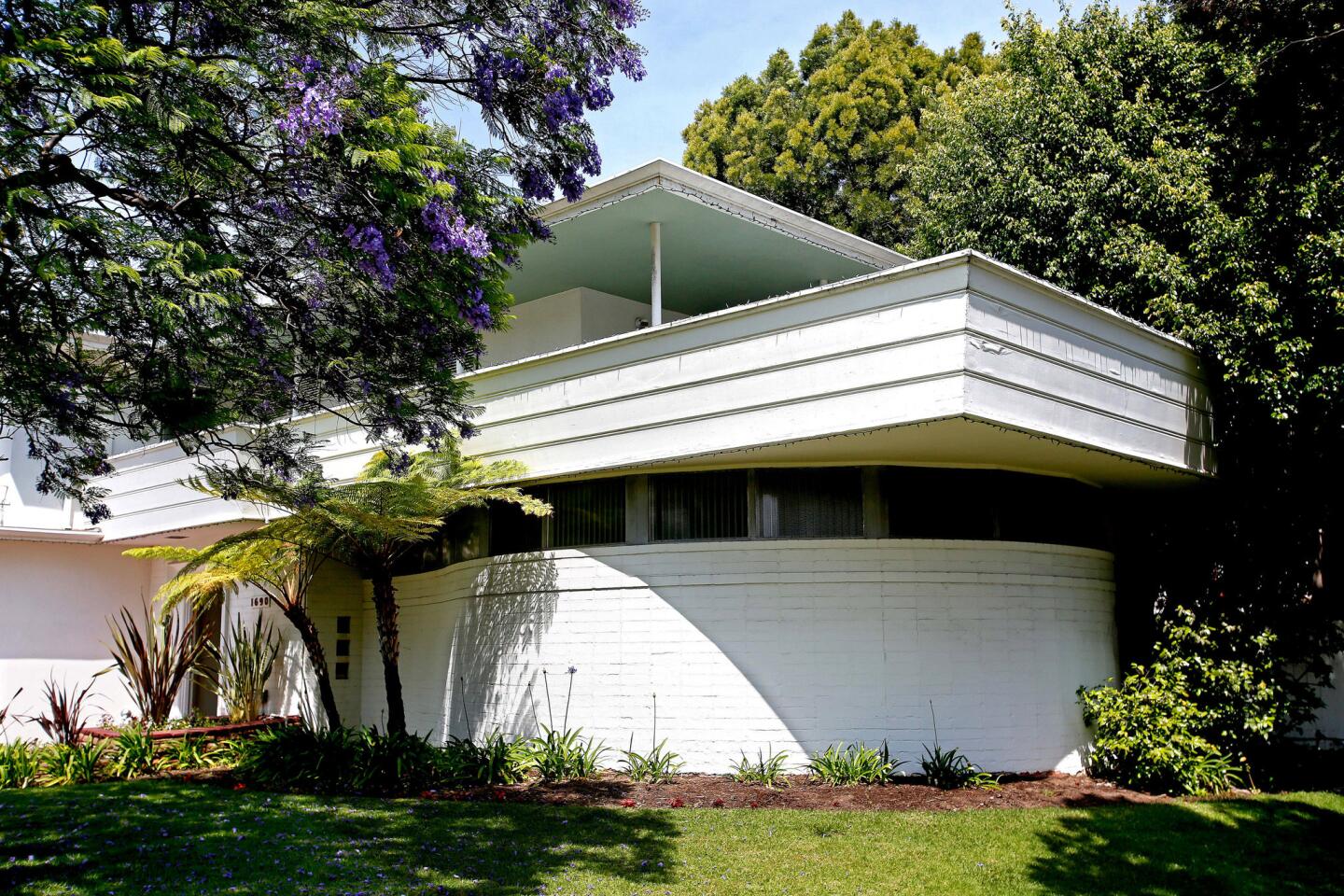Architect Paul Revere Williams is a star among celebrities
- Share via
He’s one of the hottest architects in Hollywood: The houses designed by Paul Revere Williams have attracted generations of stars — Lucille Ball and Desi Arnaz, Bill Cosby, Denzel Washington.
Actress Debra Messing recently sold a home he designed in Bel-Air for $11.4 million in less than a month — a rapid exchange for a transaction at that price. She had bought the traditional two-story house from film star Renee Zellweger a decade earlier.
Williams’ homes caught the imagination of the entertainment elite starting in the late 1920s and are still sought-after today, more than three decades after his death. During a half-century in practice, the Los Angeles architect left a legacy of close to 3,000 residential and commercial projects worldwide.
That his refined style remains coveted among a Who’s Who of celebrities is remarkable.
“He used to say if you could look at a house in a magazine from 40 years ago and still like it, that was good work,” said granddaughter Karen E. Hudson, who has spent nearly three decades chronicling the work of the first African American fellow of the American Institute of Architects. “Now it’s 90 years ago, and it’s still good.”
A crucial decision to start his career at a nonpaying job with a prominent architectural firm, paired with what Hudson called a “God-given design talent,” set him on the path to success.
“If you were black, you had to be better than everyone else just to level the playing field,” Hudson said. “He was brilliant.”
When Williams opened his own firm in 1922, there were no black architects designing luxury homes, according to Hudson’s research. It would be 25 years before Jackie Robinson broke Major League Baseball’s color barrier and 33 years before Rosa Parks refused to give up her seat on a segregated bus.
Williams taught himself to draw upside down and put the skill to good use. Clients who were uneasy around a black man could sit opposite him at a desk.
Knowing he would be judged first on his looks, Hudson said, her grandfather was always well-kept and nicely dressed.
“If you didn’t want to shake his hand, he would just build something better the next day,” she said. “He let his work stand for itself.”
Williams’ roster of clients has as much glamour as his homes — Frank Sinatra, Barbara Stanwyck, Tyrone Power. The architect became known for houses that were comfortable yet elegant, family oriented while suitable for large-scale galas.
Once people came to a party at a house he designed, word spread. His involvement in high-visibility commercial projects at the Beverly Hills Hotel, the Cocoanut Grove nightclub at the old Ambassador Hotel and the Theme Building at Los Angeles International Airport also helped him gain name recognition, although he remained in the background.
The thought of such treatment still rankles.
“Paul …” actor Bill Cosby began, then paused for a moment, “he has to go in the back of the Beverly Hills Hotel so that people will not see him.”
Cosby and his wife, Camille, knew little of the architect when they bought their Williams-designed home in Beverly Hills in the 1960s.
The transplanted Easterners liked the courtyard and wanted a brick house, which they viewed as “substantial,” he said. “Stucco, back East, means that’s a cheaply made house.”
The formal entry was another strong point, although Cosby recalled he liked absolutely “everything” about the house. “People like Wilt Chamberlain and Kareem Abdul-Jabbar had no problem entering and walking around because the ceilings were wonderfully high.”
As early homeowners have sold, later generations discovered his homes with their welcoming entries, winding staircases and light-filled breakfast rooms.
Williams was known to place grand exterior-type doorways inside houses. He incorporated built-ins and bars — those designed during Prohibition hidden behind walls. And always, there was a connection between the indoors and the outdoors.
The Bert Lahr estate on the Westside is set on 1.3 acres of walled grounds. Designed by Williams in 1941 for the actor who portrayed the Cowardly Lion in “The Wizard of Oz,” the stately house is priced at $25.58 million. Owners have included actress Betty Grable and trumpeter Harry James, singer Paul McCartney and since-divorced actors Melanie Griffith and Don Johnson.
“Williams was well known for his traditional East Coast style and this house exemplifies that,” listing agent Joyce Rey of Coldwell Banker said. A cathedral-beamed living room is among the home’s striking features.
With or without a celebrity pedigree, having the Williams name attached to a property is a draw in itself, Rey said. “People do look for Paul Williams houses.”
The 6,410-square-foot home that actress Messing sold features bay windows, shutters and red brick walkways. The traditional style was a factor in the sale, said broker Scott Underwood of Meadowbrook Realty in Long Beach. “The foyer has a nice Paul Williams feel to it.”
A sun room looking out on the garden is another Williams touch.
The buyers, whom Underwood represented, plan to maintain or restore the Williams features. They even bought a couple of Hudson’s books, Underwood said. Her latest, “Paul R. Williams: Classic Hollywood Style,” looks inside some of his grandest homes.
Restoration of Williams’ houses is becoming increasingly common, Hudson said. She has seen third and fourth owners taking the homes back to their original designs.
Although his style continues to resonate with home buyers, not all the features have withstood the test of time.
During Messing’s tenure, she remodeled the dated interiors — something Williams would have understood, Hudson said. “He would be the first to say update the kitchen and bathrooms.”
The paneled libraries that once served as a refuge for the man of the house may not be as useful to a generation reading books on Kindles and seeking “man cave” playrooms.
Interior designer Ann Ascher has lived in her Williams home on the Westside for more than four decades.
Although Ascher knew nothing about the architect then, she was smitten with the home’s understated charm. “I immediately felt at home,” Ascher said. Besides the Colonial style of her house, Williams worked in a variety of styles including English Tudor, French Normandy, Spanish Revival, Italianate and Modern.
Among the enduring Williams features at Ascher’s house are a series of hall arches, the three bay windows and a stairway niche with a shell motif. The architect’s attention to detail and sense of proportion continue to amaze Ascher.
“Every day,” she said, “I see another detail I missed over all the years.”
More to Read
Sign up for Essential California
The most important California stories and recommendations in your inbox every morning.
You may occasionally receive promotional content from the Los Angeles Times.











